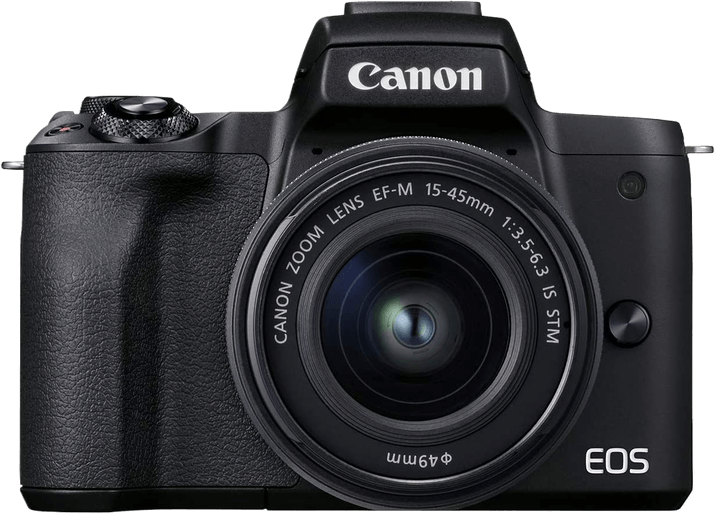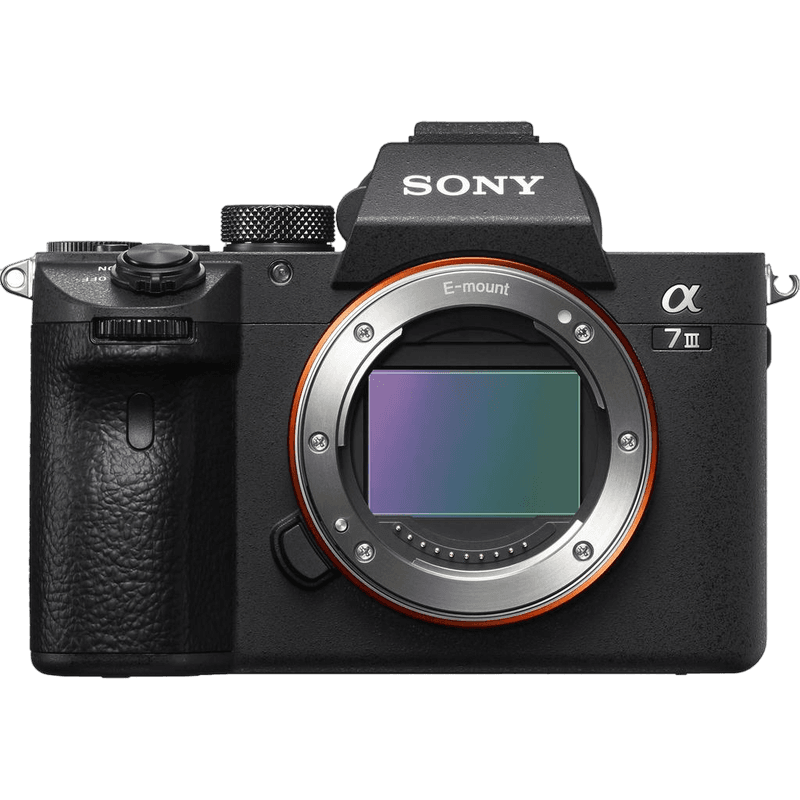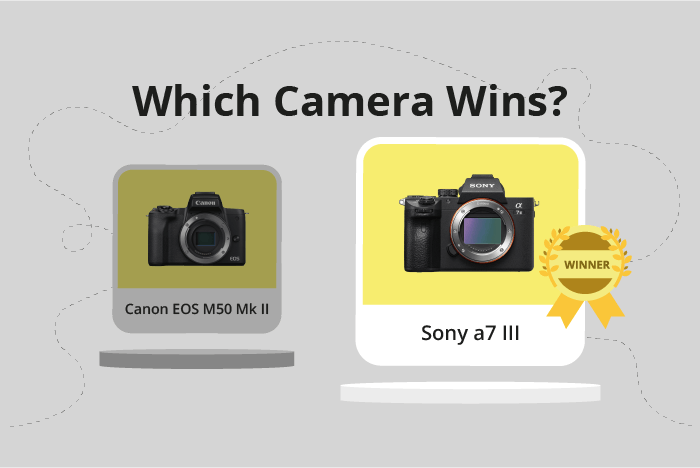Canon EOS M50 Mark II vs Sony a7 III Comparison
Canon EOS M50 Mark II

Sony a7 III

The Sony a7 III takes the lead with a score of 81, while the Canon EOS M50 Mark II trails behind with a score of 59. Both cameras share some common specifications, as they are both mirrorless and were released within the past few years.
The Sony a7 III outperforms the Canon EOS M50 Mark II in various aspects, which contributes to its higher score. However, the Canon EOS M50 Mark II has some advantages as well, such as its lighter weight of 387g compared to Sony’s 650g, making it more portable and comfortable for extended use.
Although the Canon EOS M50 Mark II is more budget-friendly, the Sony a7 III offers a better overall camera experience for those willing to invest more.
In the end, the choice between these two cameras depends on the user’s priorities and budget. The Sony a7 III is the better camera with a higher score, but the Canon EOS M50 Mark II offers a more affordable and lightweight option for those with specific needs.
Canon EOS M50 Mark II vs Sony a7 III Overview and Optics
The Sony a7 III wins in the optics comparison with a score of 81/100, while the Canon EOS M50 Mark II scores 59/100. Both cameras have 24 megapixels, a shooting speed of 10, CMOS sensors, and distinct lens mounts – Canon EF-M for the M50 Mark II and Sony FE for the a7 III.
The Sony a7 III outperforms the Canon EOS M50 Mark II in several aspects. The a7 III has a higher DXOMARK sensor score of 96, compared to the M50 Mark II’s score of 58. This high score indicates the a7 III’s superior image quality. Additionally, the a7 III has a full-frame sensor, providing better low-light performance and a wider field of view. The a7 III also features image stabilization, which reduces the effects of camera shake and allows for sharper images.
On the other hand, the Canon EOS M50 Mark II has a smaller APS-C sensor, which can be advantageous for specific purposes such as macro photography or when using telephoto lenses. However, this sensor size does not provide any significant advantages over the full-frame sensor in the Sony a7 III.
In comparing the optics of the Canon EOS M50 Mark II and Sony a7 III, it is evident that the Sony a7 III offers superior image quality, a better sensor, and image stabilization. While the Canon EOS M50 Mark II has a smaller sensor that may benefit specific photography styles, the Sony a7 III is the clear winner in terms of overall optical performance.
Canon EOS M50 Mark II vs Sony a7 III Video Performance
The Canon EOS M50 Mark II outperforms the Sony a7 III in video capabilities with a score of 91/100, compared to the Sony’s 70. Both cameras share common video specifications, such as 4K maximum video resolution and video dimensions of 3840 x 2160. However, the differences in their video performance lie in the maximum video frame rate.
The Canon EOS M50 Mark II excels with a maximum video frame rate of 120fps, enabling smoother and more detailed slow-motion footage. This feature makes the Canon camera more versatile for various video shooting scenarios, such as capturing fast-paced action or creating cinematic effects.
On the other hand, the Sony a7 III has a lower maximum video frame rate of 30fps. While this frame rate is suitable for standard video recording, it limits the camera’s ability to capture high-quality slow-motion footage.
Canon EOS M50 Mark II vs Sony a7 III Features and Benefits
The Sony a7 III outperforms the Canon EOS M50 Mark II in features, scoring 81/100 compared to the Canon’s 70/100. Both cameras share several specifications, such as a 3-inch touchscreen, flip screen, absence of GPS, and the presence of WIFI and Bluetooth connectivity.
The Sony a7 III’s superiority lies in its screen resolution, which stands at 921,600 dots, providing a sharper and clearer display than the Canon EOS M50 Mark II, which has a resolution of 1,040,000 dots. This difference in screen resolution allows users to review images and navigate the menu more efficiently on the Sony a7 III.
Although the Canon EOS M50 Mark II scores lower in features, it does have a higher screen resolution than the Sony a7 III. This advantage, however, does not outweigh the overall better performance of the Sony a7 III.
Comparing the two cameras, the Sony a7 III offers better features and performance, making it the preferable choice for users who prioritize those aspects. On the other hand, the Canon EOS M50 Mark II may be a better option for users who value a higher screen resolution. Ultimately, the right choice depends on individual preferences and priorities.
Canon EOS M50 Mark II vs Sony a7 III Storage and Battery
The Sony a7 III outperforms the Canon EOS M50 Mark II in storage and battery with a score of 81, compared to the Canon’s 21/100. Both cameras accept SD, SDHC, and SDXC memory cards, with the Sony also supporting Memory Stick Duo, Pro Duo, and Pro-HG Duo cards. Additionally, the Sony a7 III features two memory card slots, while the Canon has only one.
The Sony a7 III has a significant advantage in battery life, providing 750 shots per charge, compared to the Canon’s 305 shots. The Sony’s NP-FZ100 battery surpasses the Canon’s LP-E12 in terms of capacity.
Although the Canon EOS M50 Mark II falls behind in this comparison, it still provides a decent battery life and memory card compatibility for casual photographers. However, the Sony a7 III’s superior battery life and dual memory card slots make it a better choice for professionals or enthusiasts who require extended shooting sessions and more storage flexibility.
Canon EOS M50 Mark II vs Sony a7 III – Our Verdict
Are you still undecided about which camera is right for you? Have a look at these popular comparisons that feature the Canon EOS M50 Mark II or the Sony a7 III:

